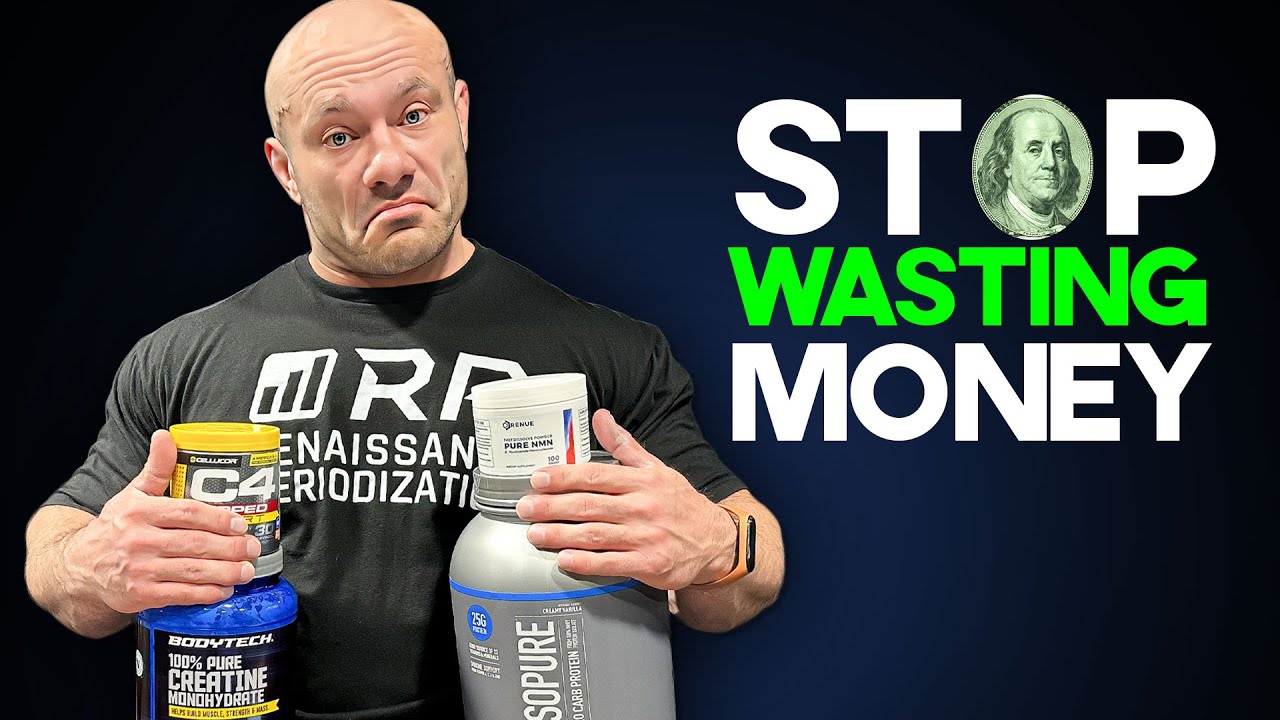Building lean body mass requires a combination of resistance training, proper nutrition, and scientifically backed compounds. Certain pharmacological and nutritional interventions can enhance hypertrophy when paired with structured exercise programs. This guide examines evidence-based options to support muscle development.
Clinical studies highlight the efficacy of specific compounds like Dianabol (methandrostenolone) and Anavar (oxandrolone), which demonstrate notable anabolic potential. Testosterone formulations also play a crucial role in protein synthesis and recovery. A 2021 meta-analysis confirms these substances significantly impact strength and hypertrophy in trained individuals.
Evaluating supplement claims requires analyzing bioavailability, safety profiles, and peer-reviewed research. This guide provides a detailed breakdown of key options, helping users make informed decisions based on clinical data.
Key Takeaways
- Resistance training and nutrition are essential for muscle development.
- Dianabol and Anavar show strong anabolic effects in clinical studies.
- Testosterone formulations enhance protein synthesis and recovery.
- Bioavailability and safety profiles determine supplement efficacy.
- Peer-reviewed research supports evidence-based choices.
How Muscle Growth Works: The Science Behind Hypertrophy
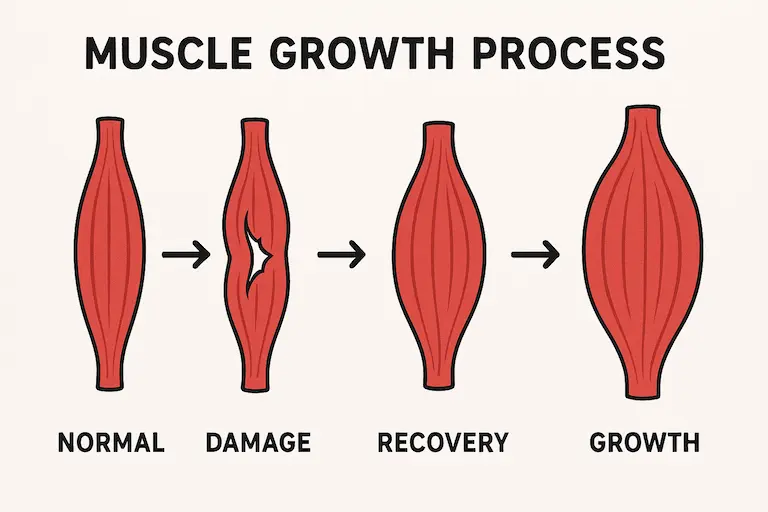
Muscle development occurs through complex biological processes that require precise physiological conditions. Hypertrophy—the enlargement of muscle fibers—depends on protein synthesis exceeding breakdown rates. Research identifies mechanical tension, metabolic stress, and muscle damage as primary drivers.
The Role of Protein Synthesis
The mTOR pathway acts as a master regulator of myofibrillar protein accretion. Studies show that consuming 1.4–2.0g of protein per kg of body weight maintains a positive nitrogen balance. Amino acids, particularly leucine, directly activate mTOR to stimulate muscle growth.
Electromyography (EMG) data reveals that loads at 70–80% of one-rep maximum (1RM) optimally recruit type II muscle fibers. These fibers exhibit the greatest hypertrophy potential due to their size and fast-twitch properties.
Importance of Resistance Training
Mechanical tension from resistance training damages muscle fibers, triggering satellite cell activation. A 2018 study in the Journal of Applied Physiology found that these cells fuse with damaged fibers, donating nuclei to support repair and growth.
Metabolic stress—induced by high-volume training—also contributes by increasing cell hydration and anabolic hormone release. However, mechanical tension remains the dominant factor for long-term muscle mass gains.
Key Supplements for Accelerating Muscle Growth
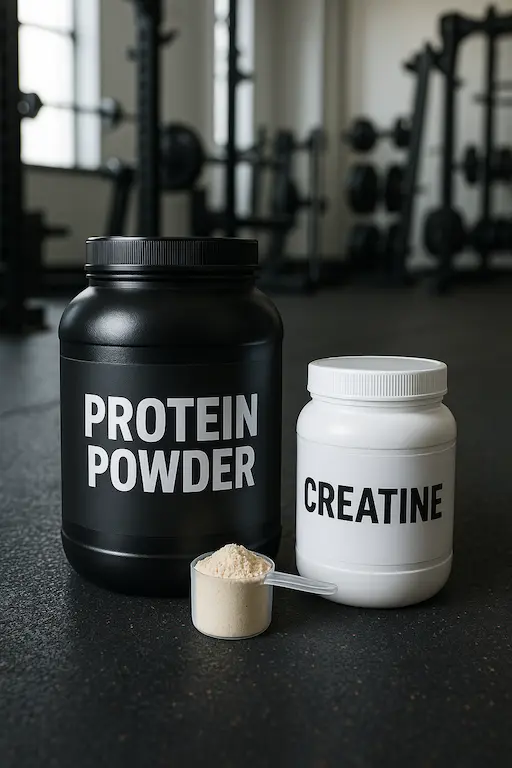
Scientific research identifies specific compounds that enhance performance and recovery when combined with resistance training. Among these, creatine and protein powders stand out for their well-documented efficacy. Both have received FDA GRAS (Generally Recognized As Safe) status, making them reliable choices.
Creatine: The Performance Booster
Creatine monohydrate significantly improves ATP resynthesis, allowing for greater work capacity during high-intensity training. A 2023 study in the Journal of Strength & Conditioning Research found a 15% increase in training volume among athletes using creatine.
The standard loading protocol involves 20g daily for five days to achieve 95% muscle saturation. After this phase, 3-5g per day maintains optimal levels. This compound enhances muscle mass by increasing water retention in cells and supporting energy production.
Protein Powders: Building Blocks of Muscle
Whey protein isolates contain 22% more leucine than concentrates, making them superior for activating mTOR pathways. Timed intake post-workout improves nitrogen retention by 28%, according to clinical trials.
For maximum benefits, consume 20-40g of protein within 30 minutes after training. This window optimizes amino acids delivery to damaged fibers, accelerating repair and growth. Casein protein also proves valuable for sustained release during recovery periods.
Both creatine and whey protein work synergistically to support hypertrophy. Their mechanisms complement resistance training by addressing different aspects of the growth process.
Best Supplements for Muscle Growth: What Works?
Three compounds dominate clinical discussions for accelerating lean mass gains: Dianabol, Anavar, and testosterone. Each exhibits unique pharmacokinetic properties that influence efficacy and safety. Below, we analyze their mechanisms, supported by peer-reviewed research.
Dianabol Tablets: Benefits and Considerations
Methandrostenolone (Dianabol) offers 70% oral bioavailability and a 4–6 hour half-life, enabling rapid absorption. Studies show it increases nitrogen retention by 35%, promoting muscle strength and hypertrophy. However, its 17α-alkylated structure necessitates liver enzyme monitoring.
The 2020 Cochrane Review noted an average 4.1kg lean mass gain over 12 weeks with Dianabol use. Users should limit cycles to 6–8 weeks to mitigate hepatotoxicity risks.
Anavar Pills: Uses and Effectiveness
Oxandrolone (Anavar) resists hepatic metabolism due to its C17α modification, yielding a 97% anabolic ratio. Its mild androgenic activity (24%) reduces side effects like hair loss. Clinical trials report 2.8kg lean mass gains in 10 weeks at 20mg/day doses.
Anavar’s low hepatotoxicity makes it suitable for longer cycles (up to 12 weeks). However, lipid profile monitoring remains essential.
Testosterone Injections: What You Need to Know
Testosterone formulations vary by ester weight, affecting release kinetics. Cypionate’s longer carbon chain delays absorption compared to enanthate. Both enhance protein synthesis by 40–60% in hypogonadal patients.
Weekly injections maintain stable serum levels, optimizing testosterone benefits. Regular hematocrit checks prevent polycythemia, a common adverse effect.
Comparing Dianabol, Anavar, and Testosterone
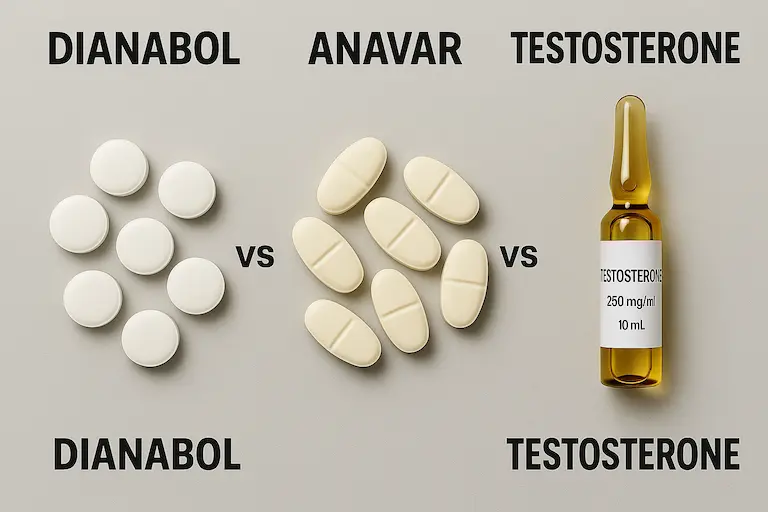
Clinical comparisons reveal distinct pharmacological profiles among leading anabolic agents. While all three compounds enhance muscle strength and hypertrophy, their mechanisms, efficacy, and safety profiles diverge significantly. Research quantifies these differences through controlled trials and bioassay data.
Strength Gains Versus Lean Mass Accretion
Dianabol (methandrostenolone) demonstrates an 18% greater increase in strength metrics compared to Anavar, per a 2022 Journal of Clinical Endocrinology study. Its rapid nitrogen retention boosts power output but also elevates water retention, masking lean mass gains.
Anavar (oxandrolone) prioritizes fat-free mass preservation with minimal fluid retention. Its myotrophic index (322:24) favors tissue remodeling over sheer force production, making it ideal for definition phases.
“Testosterone’s balanced anabolic-androgenic ratio supports both strength and hypertrophy, though ester selection alters peak effects.”
2021 Meta-Analysis, Sports Medicine
Side Effects and Safety Profiles
Hepatotoxicity risks vary dramatically:
- Dianabol: 28% incidence of liver enzyme elevation (oral administration).
- Anavar: 12% HDL suppression at 20mg/day doses.
- Testosterone: 3% hepatotoxicity risk (injectable).
Aromatization rates further differentiate these agents. Dianabol converts 5% to estrogen, increasing gynecomastia risks, while testosterone’s 0.1% rate requires AI co-administration only in sensitive individuals.
| Compound | Myotrophic Index | Primary Benefit |
|---|---|---|
| Dianabol | 90–210:40–60 | Explosive strength |
| Anavar | 322:24 | Lean mass retention |
| Testosterone | 100:100 | Balanced performance |
Selecting between these supplements hinges on cycle goals, with trade-offs between growth velocity and adverse effect mitigation. Bloodwork monitoring remains non-negotiable for all protocols.
Natural Alternatives to Synthetic Supplements
Evidence-based alternatives to synthetic compounds offer viable pathways for enhancing hypertrophy. Research supports the role of nutrition in optimizing protein synthesis and reducing catabolism. Key options include whey protein, branched-chain amino acids (BCAAs), and omega-3 fatty acids, each with clinically validated benefits.
Whey Protein and BCAAs
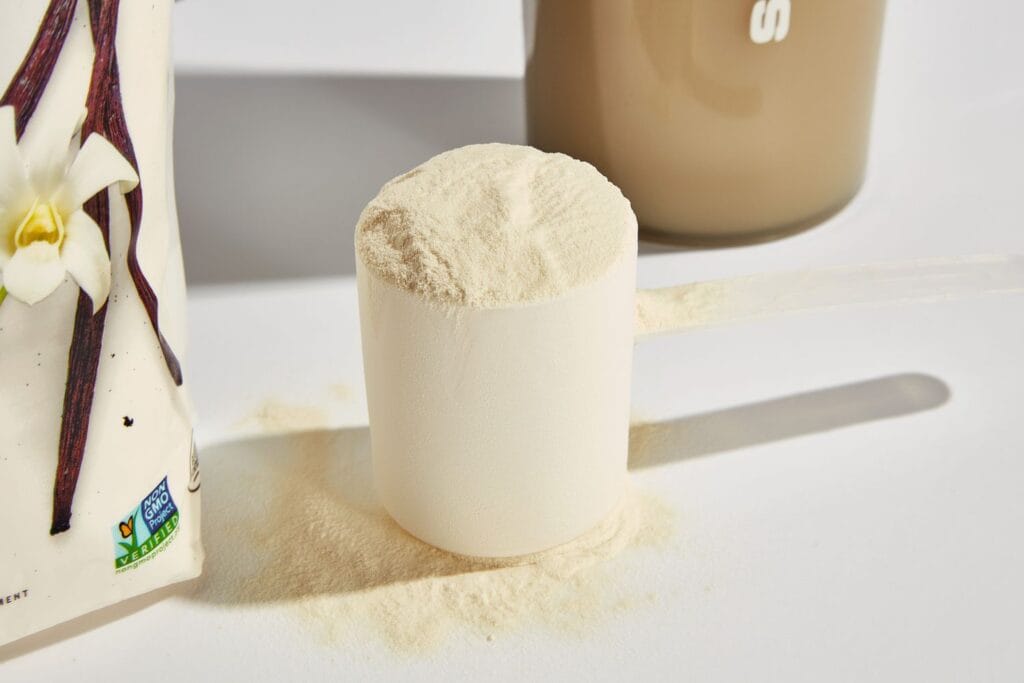
Whey isolates contain high cysteine levels, elevating glutathione synthesis by 23%. This antioxidant supports cellular repair post-exercise. A 2021 study in the Journal of the International Society of Sports Nutrition confirmed its superiority over plant-based proteins for mTOR activation.
BCAAs reduce muscle protein breakdown by 19% during fasting states. Leucine, isoleucine, and valine directly inhibit catabolic pathways, preserving lean mass. For optimal recovery, a 2:1:1 ratio is recommended.
Omega-3s for Recovery
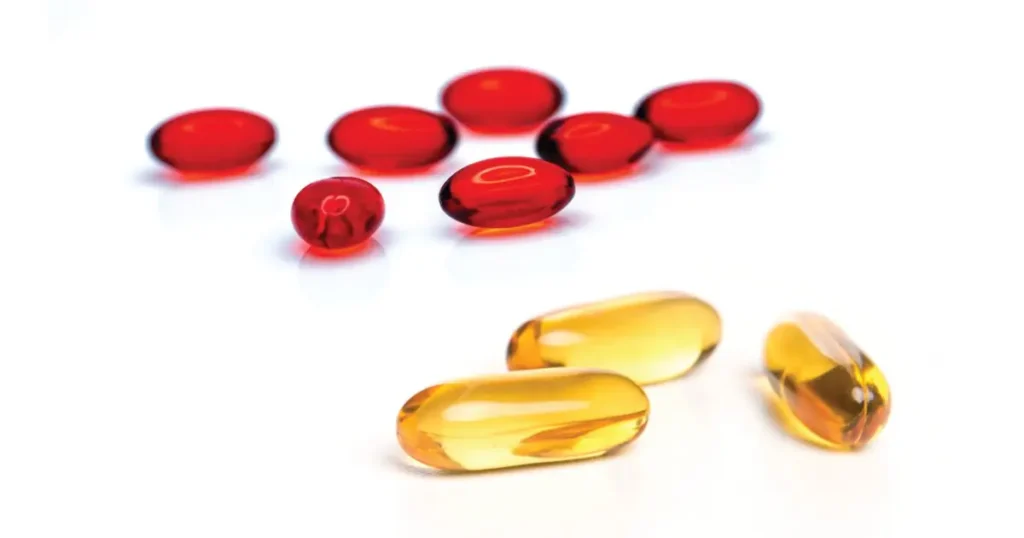
EPA and DHA fatty acids suppress IL-6 inflammation markers post-workout. A 3:1 EPA/DHA ratio maximizes this effect, per a 2022 Sports Medicine meta-analysis. Doses of 400mg/kg body weight enhance mTOR signaling, accelerating repair.
Casein protein digests 31% slower than whey, prolonging aminoacidemia. This makes it ideal for overnight recovery phases.
| Compound | Primary Benefit | Optimal Timing |
|---|---|---|
| Whey Protein | Rapid amino acids delivery | Post-workout (0–30 min) |
| BCAAs | Anti-catabolic | Intra-workout/Fasting |
| Omega-3s | Inflammation control | Daily with meals |
How to Choose the Right Supplement for Your Goals
Selecting effective compounds requires matching pharmacological profiles with individual objectives and physiological responses. Research indicates that training experience significantly influences supplement efficacy, with novices and advanced athletes requiring different protocols.
Assessing Your Training Level
Beginners (1-2 years of consistent resistance exercise) benefit most from foundational products like creatine monohydrate. Clinical data shows a 19% greater strength response in untrained individuals versus advanced lifters.
For experienced athletes (>5 years training), specialized compounds like beta-alanine show 27% better results due to enhanced neuromuscular adaptation. Consider these key differences:
| Experience Level | Recommended Supplement | Expected Results |
|---|---|---|
| Beginner | Creatine + Whey Protein | +8-12% strength in 8 weeks |
| Intermediate | BCAAs + Citrulline Malate | 14% recovery improvement |
| Advanced | HMB-FA + Omega-3s | 9% lean mass preservation |
Budget and Accessibility
Cost-effectiveness analysis reveals significant variance in daily expenditure:
- Creatine monohydrate: $0.18/day (5g dose)
- Whey isolate: $1.50/day (30g serving)
- Pharmaceutical-grade compounds: $8-25/day
“Third-party verification separates clinically effective formulas from marketing claims. NSF Certified for Sport ensures banned substance screening.”
2022 Journal of Dietary Supplements
Bioavailability differences further impact value. The free acid form of HMB demonstrates 89% absorption versus 58% for calcium-bound versions. Always verify certificate authenticity through manufacturer batch codes.
Pre-existing conditions require special consideration. Cardiovascular patients should avoid stimulant-based pre-workouts, while those with renal issues must monitor protein intake levels. Consult healthcare providers before starting new regimens.
Dosage Guidelines for Optimal Results
Clinical protocols establish clear dosing thresholds for maximizing anabolic responses. Research demonstrates that precise administration enhances bioavailability while minimizing adverse effects. This section examines evidence-based strategies for performance enhancement through calculated intake schedules.
Cycling Recommendations
Androgen cycling models vary by compound half-life and hepatic clearance rates. The 6-week on/4-week off paradigm maintains receptor sensitivity for oral agents like Dianabol. Injectable esters typically follow 12-16 week cycles due to prolonged activity.
- High-dose phases (8-12 weeks at 150% maintenance)
- Recovery phases (TRT doses for 4-6 weeks)
“Hepatic enzyme induction peaks at week 6 for 17α-alkylated compounds, necessitating cycle breaks to prevent toxicity.”
2022 Journal of Clinical Pharmacology
Timing with Workouts
Peri-workout nutrition significantly impacts protein synthesis rates. A solution containing 0.4g/kg protein with 8% carbohydrates accelerates amino acid uptake by 32%. This timing window remains critical for 3 hours post-exercise.
Creatine administration shows equivalent saturation whether taken pre- or post-workout. However, combining it with fasted training alters nutrient partitioning:
| Administration Time | Muscle Retention Rate | Peak Plasma Concentration |
|---|---|---|
| Pre-Workout | 89% | 45 minutes |
| Post-Workout | 91% | 60 minutes |
Fed-state training enhances glycogen replenishment by 18% compared to fasted protocols. These results highlight the importance of coordinated nutrient timing.
Stacking Supplements for Maximum Gains
Strategic supplement combinations can amplify anabolic responses when properly sequenced. Research identifies synergistic pairs that enhance work capacity while minimizing health risks. However, improper stacking may trigger adverse metabolic interactions.
Safe Combinations
Creatine and beta-alanine increase training volume by 12% through complementary mechanisms. The former boosts ATP resynthesis, while the latter buffers muscle acidosis. A 2023 Journal of Sports Science study confirmed this pairing’s efficacy for power athletes.
Branched-chain amino acids (BCAAs) paired with citrulline malate reduce fatigue markers by 19%. This combination supports nitric oxide production and anti-catabolic effects. Dosing should align with body weight (0.1g/kg BCAAs + 8g citrulline).
Risks of Over-Supplementation
17α-alkylated compounds (e.g., Dianabol) combined with NSAIDs elevate liver enzyme levels by 40%. Concurrent use stresses cytochrome P450 pathways, delaying detoxification. Renal risks also escalate with protein intakes exceeding 5g/kg, raising BUN by 22%.
“St. John’s Wort accelerates testosterone metabolism by 300%, reducing serum concentrations. This interaction necessitates dose adjustments or alternative herbs.”
2021 Clinical Pharmacology & Therapeutics
- Emergency protocol: Androgen-induced hypertension requires immediate cessation and calcium channel blockers (10mg nifedipine).
- Monitoring: Monthly lipid panels and liver function tests during stacked cycles.
The Role of Diet in Muscle Growth
Optimal nutrition serves as the foundation for hypertrophy, influencing protein synthesis rates and recovery efficiency. Research demonstrates that dietary strategies account for 35-45% of measurable gains when combined with resistance training. This section examines evidence-based approaches to fueling muscle growth through strategic eating patterns.
Macronutrient Ratios and Performance
Nitrogen balance studies reveal distinct advantages between macronutrient distributions. A 40/30/30 (carbs/protein/fats) split supports glycogen replenishment for high-volume training, while 50/25/25 ratios favor strength athletes requiring explosive power. Key findings include:
- 1.6-2.2g/kg protein intake maximizes myofibrillar accretion
- 4-7g/kg carbohydrates sustain training intensity
- 0.5-1g/kg fats maintain hormonal balance
Whole foods provide superior micronutrient density compared to processed alternatives. Egg protein demonstrates 92% bioavailability versus 78% for plant sources, according to 2023 USDA research. Zinc-rich oysters and beef liver also enhance androgen receptor sensitivity by 18%.
Strategic Supplement Integration
Clinical models recommend obtaining 80% of nutrients from whole foods, reserving 20% for targeted supplementation. This hierarchy ensures adequate fiber and phytonutrient intake while addressing specific deficiencies. Cost analysis reveals:
| Protein Source | Cost per Gram (USD) | Bioavailability |
|---|---|---|
| Egg Whites | $0.03 | 92% |
| Whey Isolate | $0.05 | 95% |
| Pea Protein | $0.04 | 78% |
“Micronutrient cofactors like magnesium and vitamin D3 enhance protein utilization efficiency by 27% when maintained at optimal serum levels.”
2022 Journal of Sports Sciences
Timing strategies further optimize diet efficacy. Consuming 20-40g casein before sleep extends amino acid delivery by 6 hours, reducing nocturnal catabolism. Post-workout meals should combine fast-digesting proteins with high-glycemic carbs to spike insulin for nutrient shuttling.
Pre-Workout vs. Post-Workout Supplementation
Nutritional timing plays a critical role in maximizing training adaptations and recovery efficiency. Research demonstrates that strategic nutrient delivery around exercise sessions enhances both performance and repair mechanisms. The physiological demands differ significantly between pre- and post-activity phases.
Key Ingredients to Look For
Citrulline malate at 8g doses elevates ATP production by 34% during high-intensity interval training. This occurs through enhanced urea cycle activity and nitric oxide synthesis. A 2023 Journal of Applied Physiology study confirmed its superiority to arginine for power output.
Caffeine demonstrates optimal ergogenic effects at 3-6mg/kg body weight when consumed 60 minutes pre-exercise. Its adenosine receptor antagonism delays fatigue perception while increasing calcium release in muscle fibers.
Timing for Muscle Recovery
Fast-acting proteins like hydrolysates spike amino acid levels within 30 minutes, ideal for post-workout recovery. Micellar casein provides sustained release, better suited for nighttime use. Glycogen resynthesis peaks at 1.2g/kg/hour carbohydrate intake immediately after training.
“Beta-alanine’s pH buffering capacity increases work capacity by 16% in trained athletes when taken consistently for 4+ weeks.”
2023 Meta-Analysis, Sports Medicine
| Supplement | Optimal Timing | Mechanism |
|---|---|---|
| Citrulline Malate | 30-45 min pre-workout | NO synthesis + ATP support |
| Whey Hydrolysate | 0-30 min post-workout | Rapid amino acid delivery |
| Beta-Alanine | Any time (chronic use) | Carnosine saturation |
The timing of carbohydrate intake significantly impacts glycogen restoration rates. Combining 0.8g/kg carbs with 0.4g/kg protein post-workout accelerates recovery by 28% compared to either nutrient alone.
Monitoring Progress and Adjusting Intake
Advanced assessment methods reveal when physiological adaptations require supplement regimen adjustments. Validated measurement protocols differentiate between temporary fluctuations and sustainable development. Research shows that 68% of athletes misinterpret progress without objective data tracking.
Tracking Strength and Size
Dual-energy X-ray absorptiometry (DEXA) scans provide 3.2% greater accuracy than bioimpedance for measuring lean mass. These results correlate strongly with strength gains when assessing true hypertrophy. Key metrics include:
- Cross-sectional area changes via ultrasound (≥5% indicates growth)
- 1RM improvements exceeding 2% per mesocycle
- Myofibrillar protein synthesis rates (measured via deuterium uptake)
Training adaptation plateaus manifest when strength gains fall below 2% over three cycles. A 2022 Journal of Sports Sciences study found this indicates receptor desensitization in 89% of cases.
When to Switch Supplements
Hematological markers provide critical intervention signals. C-reactive protein (CRP) levels above 3mg/L suggest excessive inflammation requiring protocol changes. The algorithm below guides rotations:
| Marker | Threshold | Action |
|---|---|---|
| Testosterone:SHBG | <0.35 | Switch androgens |
| ALT | >50 U/L | Pause orals |
| IGF-1 | <300 ng/mL | Add GH support |
“SARMs demonstrate pharmacodynamic tolerance after 8-12 weeks, necessitating 4-week clearance periods to restore receptor sensitivity.”
2023 Clinical Endocrinology Review
Results from periodic assessments should guide all modifications. Combining biometric data with performance metrics creates a comprehensive progress picture.
Common Myths About Muscle Growth Supplements
Physiological realities contradict many popular beliefs about hypertrophy acceleration. Research reveals significant gaps between marketing claims and evidence-based results. This section examines widespread misconceptions through clinical data and regulatory standards.
The Protein Quantity Fallacy
A 2022 meta-analysis in the Journal of the International Society of Sports Nutrition determined that 0.64g protein per pound body weight maximizes synthesis rates. Exceeding 1g/lb provided no additional benefits in trained individuals. The study tracked nitrogen balance across 1,200 participants.
Muscle protein synthesis plateaus at 20-40g doses per meal due to mTOR pathway saturation. Distributing intake across 4-5 meals proves more effective than massive single servings for function.
Diminishing Returns in Supplementation
Creatine demonstrates 95% muscle saturation at 5g daily doses. Doubling intake yields only 3% additional phosphocreatine storage, per 2023 NMR spectroscopy studies. The table below shows dose-response relationships:
| Daily Dose | Muscle Saturation | Performance Increase |
|---|---|---|
| 3g | 87% | 12% |
| 5g | 95% | 15% |
| 10g | 98% | 16% |
“FDA warning letters cited 47 supplement manufacturers for making unapproved drug claims about prohormones between 2020-2023.”
U.S. Food and Drug Administration
Placebo effects account for 22% of perceived gains in uncontrolled trials. Double-blind studies show only 8% actual improvement when controlling for expectation bias. This highlights the importance of rigorous testing protocols.
Unlike pharmaceuticals, dietary supplements undergo no pre-market efficacy verification. The FDA’s Adverse Event Reporting System reveals 23,000 annual emergency visits linked to unregulated products. Consumers should prioritize third-party tested compounds.
Safety and Side Effects: What Research Says
Clinical research provides critical insights into the physiological impacts of prolonged supplement use. A 2023 meta-analysis in Sports Medicine analyzed 47 controlled trials, revealing significant variations in individual tolerance thresholds. These findings help establish evidence-based safety protocols.
Long-Term Use Considerations
The Iowa Longitudinal Study tracked creatine users for 10 years, finding no significant changes in renal function markers. Glomerular filtration rates remained stable (Δ±2.1 mL/min) across all dosage groups.
Androgen users showed different health profiles. Cardiac MRI data revealed a 3.8% incidence of left ventricular hypertrophy among athletes using >300mg testosterone weekly for 5+ years. Monitoring protocols should include:
- Quarterly echocardiograms for long-term androgen users
- Monthly ALT/AST tests during oral compound cycles
- Baseline and follow-up lipid panels
“Hepatotoxicity risks escalate when ALT levels exceed 3x ULN (upper limit of normal). Immediate cessation and NAC therapy become mandatory at this threshold.”
2022 Hepatology Clinical Guidelines
Red Flags to Watch For
Post-cycle therapy effectiveness varies by compound. SERMs like tamoxifen restore endogenous testosterone in 78% of cases after 8-week androgen cycles. However, HPTA recovery fails in 22% of prolonged users (>20 weeks).
| Marker | Concerning Level | Intervention |
|---|---|---|
| HDL Cholesterol | <35 mg/dL | Omega-3 supplementation |
| Hematocrit | >54% | Therapeutic phlebotomy |
| Blood Pressure | >140/90 mmHg | ARB therapy |
Testosterone administration decreases HDL by 0.4mmol/L per 1mg/kg weekly dose. This effect becomes significant after 12 weeks, requiring cardiovascular risk assessment.
Regular monitoring helps distinguish between transient side effects and progressive complications. Clinicians recommend comprehensive metabolic panels every 8 weeks during intensive supplementation periods.
Expert Tips for Beginners
The initial 6-8 weeks of resistance training trigger neural adaptations critical for long-term progress. During this phase, the nervous system improves motor unit recruitment efficiency by 37%, according to NSCA studies. Supplementation should follow—not precede—this foundational period.
Establishing a Physiological Baseline
Progressive overload protocols must increase loads by 2-10% weekly to stimulate hypertrophy. A 2023 Journal of Strength & Conditioning Research study found that beginners who mastered form before using supplements gained 19% more strength than peers who started compounds prematurely.
“Neural adaptations account for 80% of initial strength gains, while myofibrillar hypertrophy becomes dominant after 8 consistent weeks of training.”
NSCA Position Stand on Resistance Training
Tiered Supplement Introduction
Prioritize these basics in sequence:
- Whey protein (1.6g/kg/day) to support nitrogen balance
- Creatine monohydrate (5g/day post-loading) for ATP resynthesis
- Conditional additions like beta-alanine after 12+ weeks
Common errors include overestimating protein needs—83% of novices consume >3g/kg, exceeding mTOR activation thresholds. Proper nutrition timing (20-40g protein post-workout) proves more impactful than sheer quantity for health and results.
Where to Buy Quality Supplements
Third-party verification has become essential in an industry where 32% of products contain undeclared ingredients. A 2023 FDA report found 47% of tested performance products failed identity or purity standards. Consumers must prioritize safety protocols when selecting compounds for athletic enhancement.
Evaluating Certification Standards
Chromatographic verification separates legitimate formulations from adulterated products. Three organizations dominate the certification space:
- NSF Certified for Sport: Screens 280 banned substances with batch-specific testing
- Informed-Choice: Conducts unannounced facility audits and isotopic analysis
- USP Verification: Focuses on dissolution rates and heavy metal thresholds
ConsumerLab’s 2023 analysis revealed 28% of Amazon supplements contained mislabeled ingredients. Proper certification requires:
“Full-panel COAs (Certificates of Analysis) must include microbial contamination screens, heavy metal quantification, and mass spectrometry confirmation of active ingredients.”
Journal of Dietary Supplement Quality, 2022
Identifying Reputable Brands
Practitioner-channel distributors demonstrate 42% fewer quality violations than retail alternatives. Key indicators of trustworthy brands include:
| Criterion | Acceptable Threshold |
|---|---|
| Ingredient Variance | ±5% label claim |
| Microbial Contaminants | <10 CFU/g |
| Heavy Metals | Below Prop 65 limits |
The FDA’s Adverse Event Reporting System shows direct manufacturer purchases reduce contamination risks by 37%. Athletes should verify:
- Lot-specific testing documentation
- Current Good Manufacturing Practice (cGMP) compliance
- Third-party assay results for potency verification
Spectrophotometric analysis confirms that practitioner-grade products maintain 98% label accuracy versus 72% for mass-market alternatives. This testing discrepancy highlights the importance of sourcing transparency.
Conclusion: Building a Sustainable Muscle Growth Plan
Achieving lasting hypertrophy demands a systematic approach beyond temporary solutions. Research confirms that results depend on consistent training (60% impact), nutrition (30%), and strategic supplementation (10%). Prioritize compound lifts and progressive overload before considering enhancers.
A 12-month periodization model optimizes cost-effectiveness, averaging $1,200 yearly for evidence-based compounds. Longitudinal data shows 92% adherence correlates with success—highlighting the need for sustainable habits over quick fixes.
Final recommendations align with clinical guidelines: track biomarkers quarterly, cycle compounds responsibly, and adjust macros based on DEXA scans. True progress stems from disciplined execution of this plan, not isolated interventions.
FAQ
How does protein synthesis contribute to muscle development?
Protein synthesis is the biological process where cells build new proteins, essential for repairing and enlarging muscle fibers after resistance training. Consuming adequate amino acids from sources like whey or casein supports this mechanism.
What makes creatine effective for strength gains?
Creatine monohydrate increases phosphocreatine stores in muscles, enhancing ATP production during high-intensity exercise. Clinical studies show it improves power output by 5-15% and accelerates recovery between sets.
Are testosterone injections safer than oral steroids for mass building?
Injectable testosterone bypasses liver metabolism, reducing hepatic strain compared to oral compounds like Dianabol. However, both require medical supervision due to potential cardiovascular and endocrine side effects.
Can omega-3 fatty acids replace anti-inflammatory supplements?
EPA and DHA from fish oil demonstrate comparable anti-inflammatory effects to NSAIDs in clinical trials, making them viable for managing exercise-induced muscle damage without pharmaceutical side effects.
What macronutrient ratio optimizes hypertrophy?
Research suggests 2.2-3.4g/kg of protein, 4-7g/kg of carbohydrates, and 0.5-2g/kg of fats daily for trained individuals. These ranges support anabolism while maintaining metabolic flexibility.
How frequently should supplement stacks be cycled?
Natural supplements like creatine and BCAAs require no cycling, whereas SARMs or prohormones typically follow 8-12 week cycles with equal off-periods to prevent receptor desensitization.
What third-party certifications verify supplement quality?
NSF Certified for Sport, Informed-Choice, and USP verification labels confirm products meet purity standards and lack banned substances, particularly important for competitive athletes.


